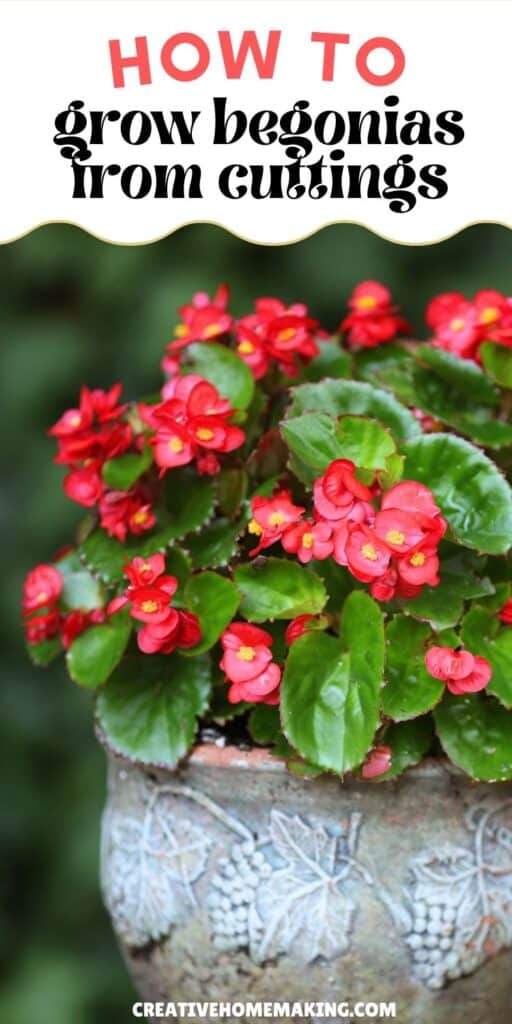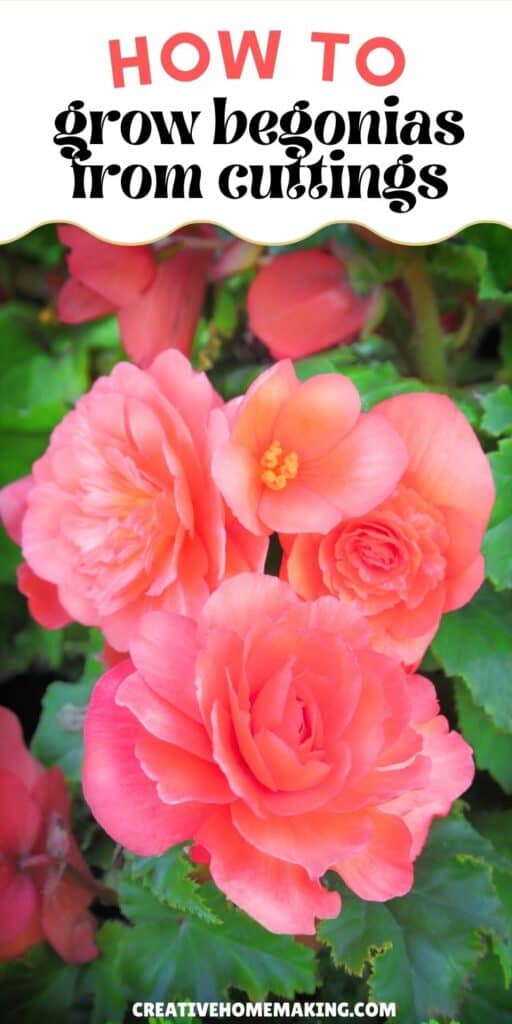If you want to grow begonias from cuttings, you can do it easily with a few simple steps. The key is to take a healthy cutting, place it in water or soil, and keep it in a warm, bright spot until roots form. This method lets you create new plants without buying seeds or mature begonias.
This post may contain affiliate links.
Growing begonias from cuttings is such a great way to multiply your plants and save money. Plus, it’s satisfying to watch your new begonias grow from just a small piece of the original plant. You’ll need a little patience, but the process is simple enough for beginners.
Related Article: How to Grow Begonias in Containers: Easy Tips for Beautiful Blooms

Essential Steps for Growing Begonias From Cuttings
To grow begonias from cuttings, you need to pick the right plant type, choose healthy stems, use good rooting techniques, and move the young plants carefully. Each step helps you get strong, healthy begonias.
Related Article: How to Grow Begonias from Seed: Easy Tips for Happy, Healthy Plants
Choosing the Right Begonia Variety
Start by picking a begonia variety suited to cuttings. Rex, fibrous-rooted, and angel wing begonias root easily from stem cuttings. Avoid tuberous begonias because they grow better from tubers.
Look for plants that are healthy and disease-free. Strong, young plants give better cuttings with a higher chance to root.
Think about your space too. Some begonias stay small, while others grow big and need more room.
Related Article: Best Plants for Hanging Baskets: Add Color and Life to Your Space
Selecting and Preparing Healthy Cuttings
Choose stems about 4-6 inches long with at least two leaves. Cut just below a leaf node since roots form there.
Trim off any flowers or buds on the cutting. They take energy away from root growth. Remove leaves from the bottom half to stop rot. Keep at least two leaves on top for photosynthesis.
Use a clean, sharp knife or scissors to cut. This helps prevent disease.
Related Article: How to Deadhead and Prune Begonias for Healthier, Happier Plants

Rooting Methods for Begonia Cuttings
You can root begonias in water or soil. Water rooting shows roots faster but needs careful transfer to soil later.
For soil, use light, well-draining material like peat and perlite mix. Keep soil moist but not soggy.
Place cuttings in indirect light. Avoid direct sun, which can dry them out.
Keeping high humidity helps rooting. You can cover cuttings with a plastic bag or use a mini greenhouse.
Related Article: Best Companion Plants for Begonias to Brighten Your Garden Together
Transplanting Rooted Cuttings
Once roots are 1-2 inches long, move cuttings to pots with potting soil. Water after transplanting to settle soil around roots. Avoid overwatering.
Keep plants in bright, indirect light while they adjust.
Wait a few weeks before fertilizing to let roots grow stronger. To grow begonias from cuttings you want to use a balanced, weak fertilizer when you start feeding.
Check for pests or stress regularly. Healthy growth means your cuttings are ready to thrive.
Caring for Begonia Cuttings After Planting
After planting your begonia cuttings, you need to keep the right conditions to help them grow roots and stay healthy. This means controlling the light, temperature, water, and humidity carefully. Avoid common mistakes like overwatering or too much sun to protect your cuttings.
Providing Proper Light and Temperature
Begonia cuttings need bright, indirect light. Direct sunlight can burn their leaves, so place them near a window with filtered light or use a sheer curtain. Too little light will slow their growth.
The ideal temperature for begonias is between 65°F and 75°F (18°C to 24°C). Avoid cold drafts or placing them near heaters. Sudden temperature changes can harm young cuttings.
Watering and Humidity Tips
Keep the soil lightly moist but never soggy. Water when the top inch of soil feels dry. Too much water can cause the roots to rot.
Begonias like humidity. You can increase it by misting the cuttings with water or placing a plastic cover over the pot. Just make sure air can still flow to prevent mold.
Common Mistakes and How to Avoid Them
Don’t overwater. This is the top reason cuttings fail. Check the soil moisture before watering. Avoid direct sunlight, which can scorch leaves. Use bright shade instead.
Don’t keep cuttings in low humidity without extra moisture. Dry air slows root growth. Use clean tools and pots to prevent disease. Dirty equipment can cause infections that kill your cuttings.
Follow my begonias board on Pinterest.




